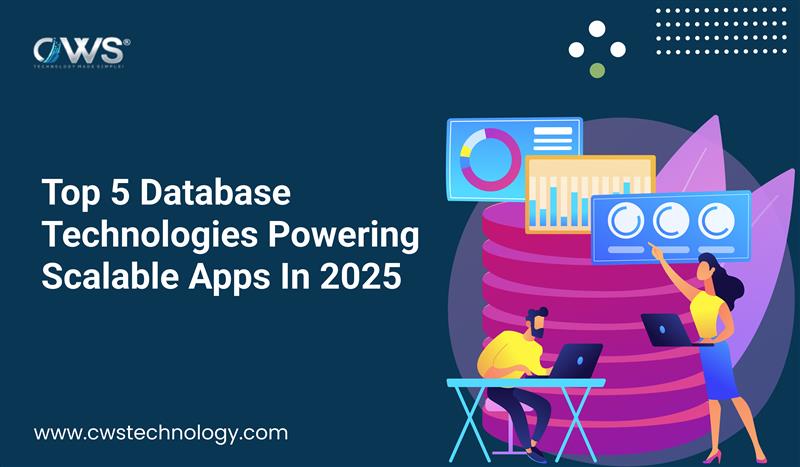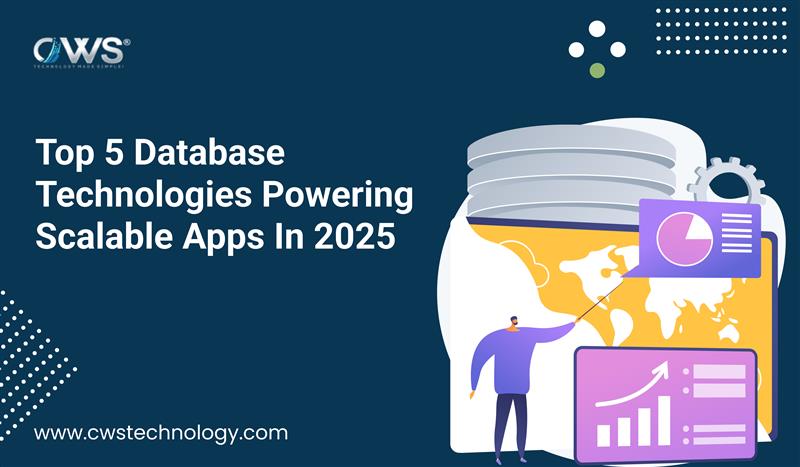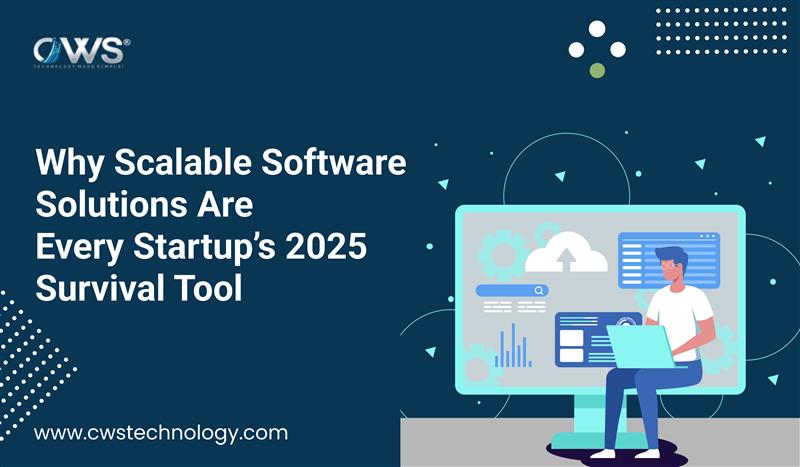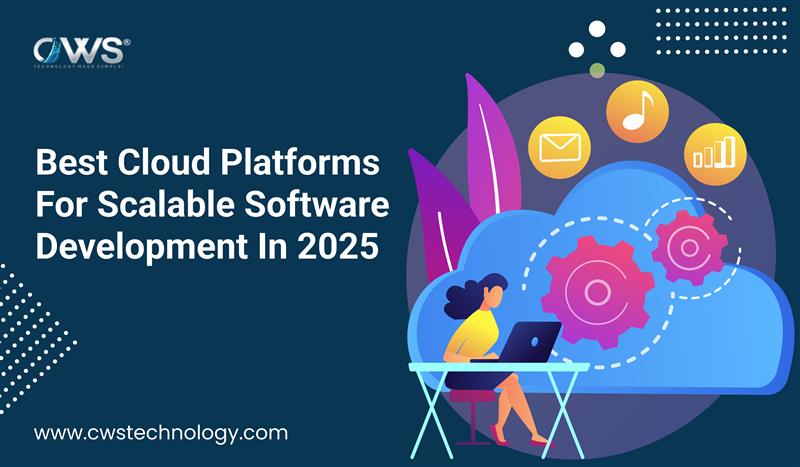Database technologies for scalable apps in 2025 are at the core of modern digital innovation. As businesses handle increasingly complex, data-driven workloads, the ability to scale efficiently and maintain performance has become a strategic priority.
Traditional relational databases often struggle to meet the agility and scalability demands of cloud-native applications. In 2025, a new generation of database solutions has emerged—built to support global scale, dynamic workloads, and seamless developer experiences.
Here are the top 5 database technologies powering scalable apps in 2025: MongoDB, PostgreSQL, Firebase, CockroachDB, and NeonDB. Each plays a unique role in helping developers build faster, more reliable, and infinitely scalable applications.
1. MongoDB — Flexible and Scalable NoSQL Powerhouse
MongoDB remains a leader among database technologies for scalable apps in 2025. It’s a document-oriented NoSQL database that stores data in JSON-like formats, providing flexibility for dynamic, unstructured, and evolving data models.
Key Advantages
- Schema flexibility: Modify data structures without costly migrations or downtime.
- Horizontal scalability: Sharding and replication enable scaling across distributed systems.
- Cloud integration: MongoDB Atlas provides fully managed, cloud-native operations with built-in scaling and monitoring.
Best Use Cases
- Real-time analytics applications
- IoT and sensor data management
- Personalization and recommendation engines
Visual suggestion: Insert an infographic comparing SQL and NoSQL architectures to illustrate MongoDB’s scalability advantages.
2. PostgreSQL — The Open-Source Leader for Modern Enterprises
PostgreSQL, or Postgres, is a highly reliable and feature-rich relational database that has evolved into a hybrid data engine capable of handling both structured and semi-structured data. Its performance, stability, and open-source nature make it a top choice for enterprises and startups alike.
Why It Stands Out
- ACID compliance: Guarantees data integrity across transactions.
- Horizontal scaling: Extensions such as Citus allow for distributed database processing.
- Versatility: Supports JSON, geospatial data, and complex queries.
Real-World Example
Major global platforms, including Reddit and Spotify, use PostgreSQL to manage massive amounts of user data with high concurrency.
Visual suggestion: Add a visual illustrating PostgreSQL’s scalability compared to traditional relational databases.
3. Firebase — Real-Time Power for Mobile and Web Applications
Firebase, a Google product, continues to dominate in the real-time and serverless database segment. It enables developers to build apps that update instantly across users and devices, without complex backend management.
Key Features
- Real-time synchronization: Instantly updates data across all clients.
- Serverless scalability: Automatically adjusts to handle surges in user activity.
- Integrated ecosystem: Combines database, authentication, hosting, and analytics under one umbrella.
Ideal Use Cases
- Live chat and messaging apps
- Multiplayer gaming platforms
- Collaborative tools and real-time dashboards
Visual suggestion: Include a diagram showing Firebase’s real-time synchronization across users and devices.
4. CockroachDB — Distributed SQL for Global Resilience
CockroachDB is a distributed SQL database designed for cloud-native scalability and global reliability. Its architecture provides the strong consistency of SQL with the horizontal scalability of NoSQL systems.
Core Strengths
- Distributed architecture: Automatically replicates and partitions data across nodes.
- ACID transactions at scale: Ensures data accuracy even across regions.
- Fault tolerance: Automatically recovers from node or regional failures without downtime.
Ideal Use Cases
- Financial systems requiring transactional consistency
- E-commerce and retail platforms with worldwide reach
- Enterprise SaaS applications demanding continuous uptime
Visual suggestion: Use a global map-style graphic showing CockroachDB’s replication and failover system across multiple regions.
5. NeonDB — The Serverless PostgreSQL of the Future
NeonDB is redefining what it means to be a cloud-native, serverless PostgreSQL database. It separates compute and storage layers to enable dynamic scaling, cost efficiency, and faster development cycles.
Highlights
- Serverless scaling: Resources automatically adjust based on traffic.
- Branching for development: Instantly create database branches for testing or staging.
- PostgreSQL compatibility: Offers the reliability of Postgres with modern cloud scalability.
Ideal Use Cases
- SaaS platforms with variable workloads
- Developer environments needing quick test deployments
- Cloud-native applications built on microservices architecture
Visual suggestion: Add a graphic showing NeonDB’s compute-storage separation model.
Choosing the Right Database for Your Scalable Application
When evaluating the top database technologies for scalable apps in 2025, align each database’s core strengths with your specific application requirements.
- MongoDB: Ideal for unstructured data, real-time analytics, and content-driven systems.
- PostgreSQL: Best for complex relational queries, strong consistency, and enterprise-grade performance.
- Firebase: Suited for real-time, interactive, and mobile-first experiences.
- CockroachDB: Perfect for globally distributed, mission-critical applications.
- NeonDB: Excellent for modern, serverless, and cost-optimized deployments.
Many development teams are adopting polyglot persistence—combining multiple databases to serve distinct needs within a single system. This approach enables optimal performance, cost efficiency, and data management flexibility.
Visual suggestion: Include a summarized infographic mapping each database to its ideal use case.
Conclusion
The top 5 database technologies powering scalable apps in 2025—MongoDB, PostgreSQL, Firebase, CockroachDB, and NeonDB—illustrate how far database innovation has come. Each offers unique strengths tailored to modern development challenges, from real-time experiences to global fault tolerance and serverless scalability.
Selecting the right database is a strategic decision that affects not just application performance but also cost, maintainability, and future growth. In 2025 and beyond, scalability is no longer optional—it’s a foundational requirement for success.








